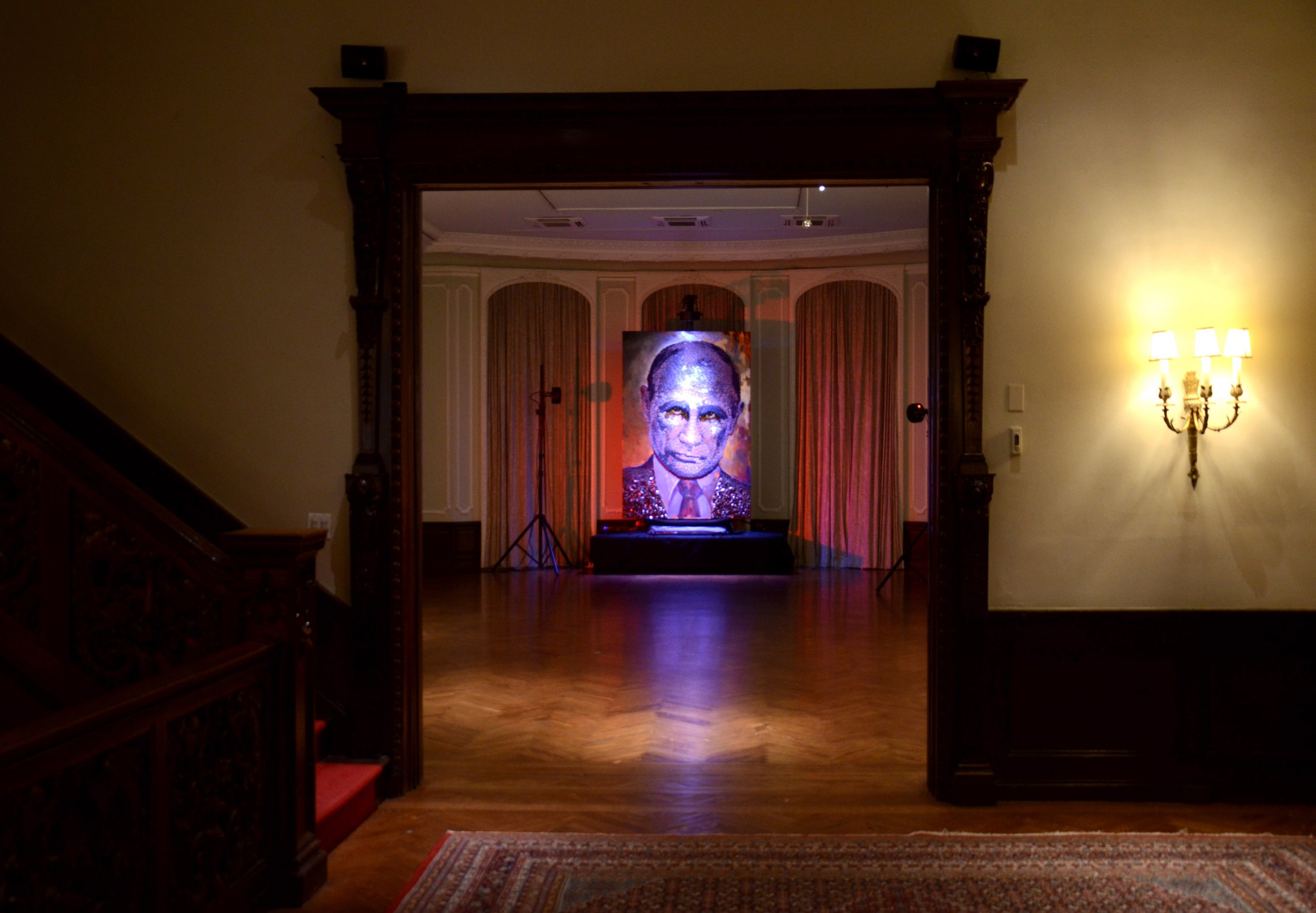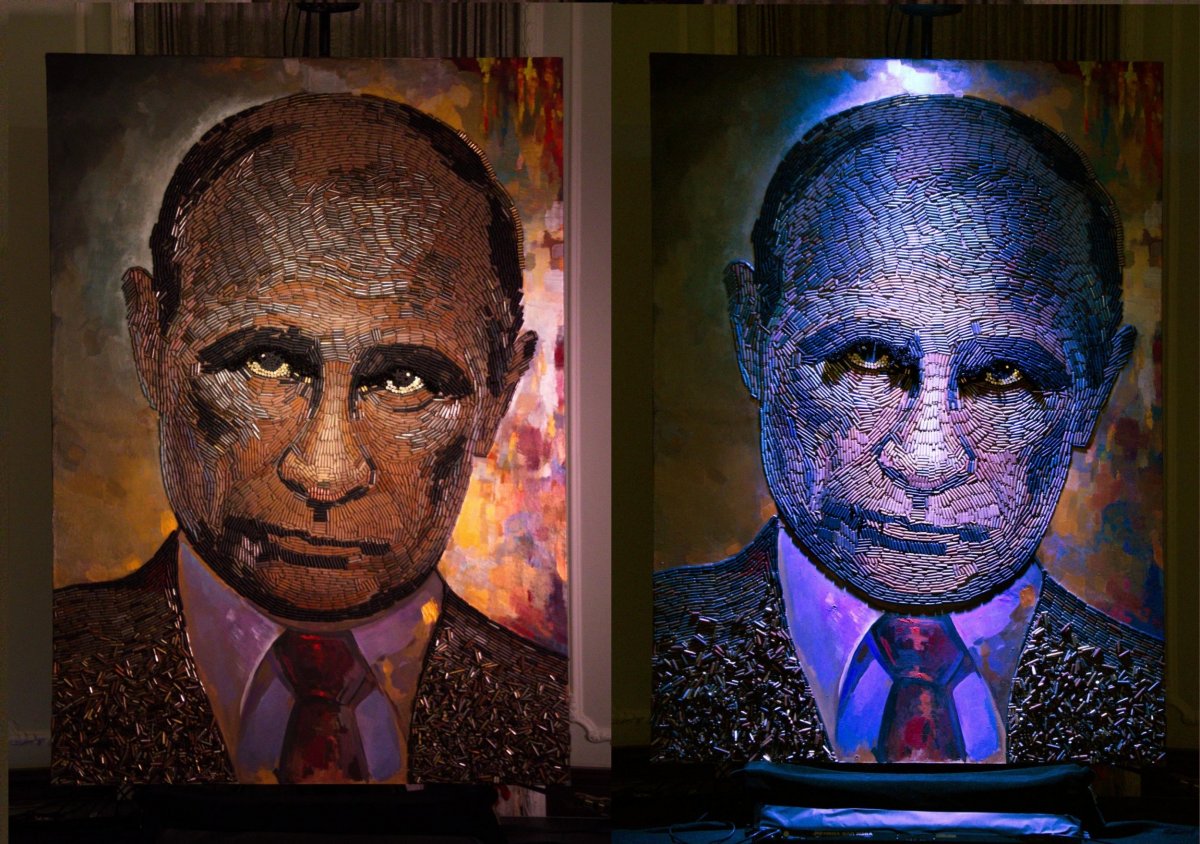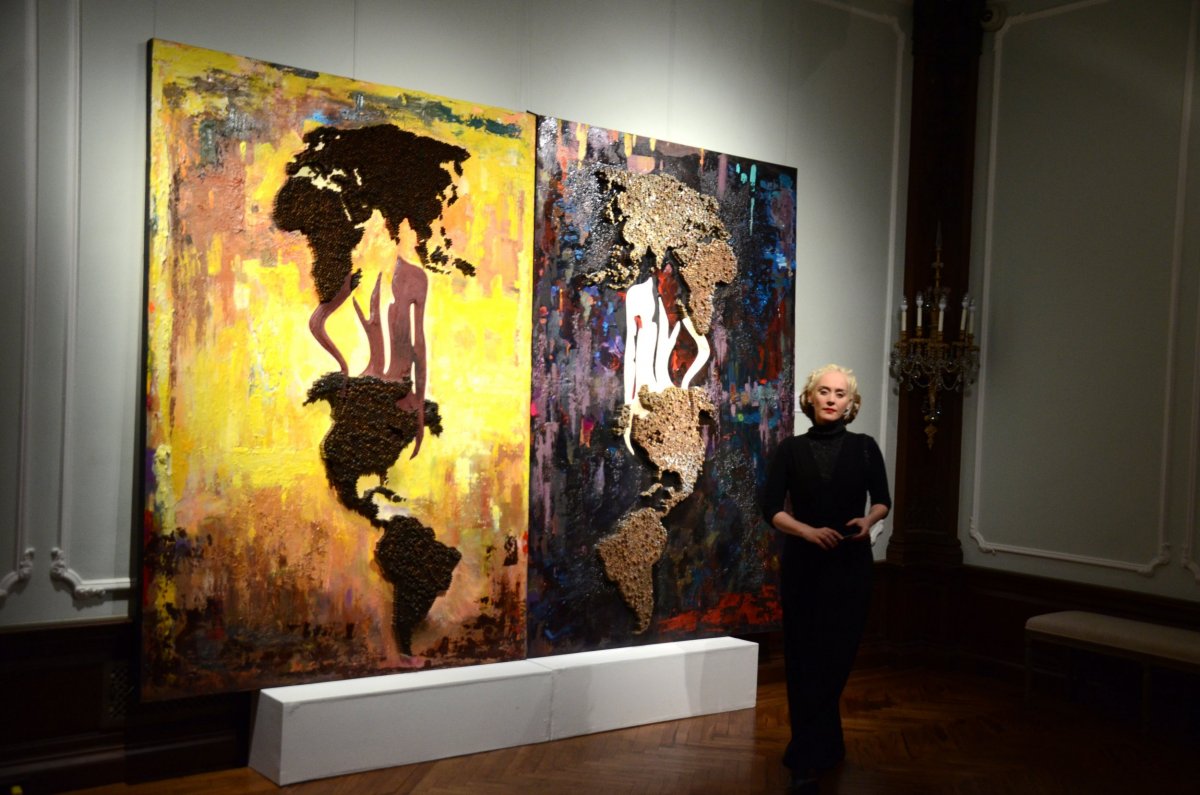
The vague menace of Vladimir Putin has haunted American politics for nearly two years. But in eastern Europe, Russia's authoritarian president has wielded his influence for far longer and with a very tangible impact. The former Soviet state of Ukraine, in particular, has felt the force of Putin's power.
In March 2014, Russia annexed the Crimean peninsula after a revolution in Ukraine toppled its Kremlin-backed president, Viktor Yanukovych. (The territory is now claimed by both Ukraine and Russia.) Russian troops invaded parts of southern Ukraine after the annexation, and Kremlin-backed hackers have launched cyberwar campaigns to disrupt Ukraine's government and public utilities.
Naturally, Russia's invasion, the ongoing conflict and the man responsible for both have incited responses from politicians and observers around the world. But perhaps one of the most potent reactions is a set of large-scale works by Ukrainian artists and activists Daria Marchenko and Daniel Green.
Five Elements of War, on view through February 4 at the Ukrainian Institute of America in New York, is a monumental exhibition that reflects the conflict raging in the artists' home country and comments more broadly on war, tyranny and freedom. The centerpiece is "The Face of War," a giant 94.5-by-67-inch portrait of Putin completed in 2015 and constructed from roughly 5,000 spent bullet casings gathered from the front.
"There is a war there and we seem unaware of it," Walter Hoydysh, director of art at the institute, told Newsweek of the conflict in eastern Ukraine. This exhibit makes it impossible to ignore the war, as well as the pain and suffering it has caused. The towering Putin portrait—a reminder of the unknown number of casualties inflicted by the bullets used to build it, and him, up—"unapologetically depicts the figure behind the conflict in Ukraine."
The piece, in fact, has many faces. The day before the show opened to the public, the artists worked to set up their giant works of art in two rooms at the cultural organization—just the latest site for their exhibit, which has previously been seen at M17 Gallery (Kyiv), the Rayburn House Office Building (Washington, D.C.) and the Ukrainian Institute of Modern Art (Chicago). Marchenko made adjustments to perfect a rotating lighting scheme that lent Putin a changing demeanor. As shadows were cast over his face, his expression shifted from the monstrous glare of a dictator to the fearful, human plea of a man in the time of war.

"We made a decision to make the face of the tyrant," Marchenko told Newsweek. "Because of him we lost so many friends," she added. "It doesn't matter how he acts and shows war, war consists of the lives of innocent people."
While "The Face of War" is the exhibit's showstopper, the four other mixed-media works on display—some even larger, all created in 2016—command their own attention as searing commentary on dictatorship, democracy and propaganda.
"The Flesh of War," for example, is a set of two side-by-side canvases (a diptych) that depict torsos of female figures painted between maps of the continents composed of bullet casings. It serves as "a sober reminder," the description reads, that women often bear the brunt of war "as protectors of their homes, victims of aggression and violence and refugees with their families."

"Honor," meanwhile, is a criticism of the international response to Russia's actions in Ukraine. "All the world watches this aggression and doesn't do anything," Marchenko said. "This war is about democracy, the power of law, the power of agreements."
The piece takes the form of a giant eye. The white is composed of faded pages of the Budapest Memorandum on Security Assurances ( signed in 1994 by Russia, the U.S. and the U.K. when Ukraine agreed to give up its nuclear weapons). The iris and pupil—from afar the latter appears to have a human silhouette standing in a bright doorway—are constructed from shoulder epaulets from military uniforms of the countries that signed the memorandum and other agreements, shell casings and other debris.

The work on display in Five Elements of War is urgent. There might be other fires raging around the world, but the one set by Russia in eastern Ukraine is still smoldering. And while the use of empty shell casings in the pieces is provocative, it doesn't feel like a gimmick. The materials are potent artifacts of death, injury and near-misses from an ongoing armed conflict. When the viewer imagines the damage each one of those thousands of pieces of metal might have caused, it elicits a visceral reaction. The war feels tangible, and immediate.
"When you can touch this bullet, it's already not numbers, it's something you can feel in your heart," Green told Newsweek. "Art is a very good weapon. Bullets are a weapon of war and art is a weapon of peace. We fight to make peace in war."
Uncommon Knowledge
Newsweek is committed to challenging conventional wisdom and finding connections in the search for common ground.
Newsweek is committed to challenging conventional wisdom and finding connections in the search for common ground.
About the writer
Stav is a general assignment staff writer for Newsweek. She received the Newswomen's Club of New York's 2016 Martha Coman Front ... Read more
To read how Newsweek uses AI as a newsroom tool, Click here.








